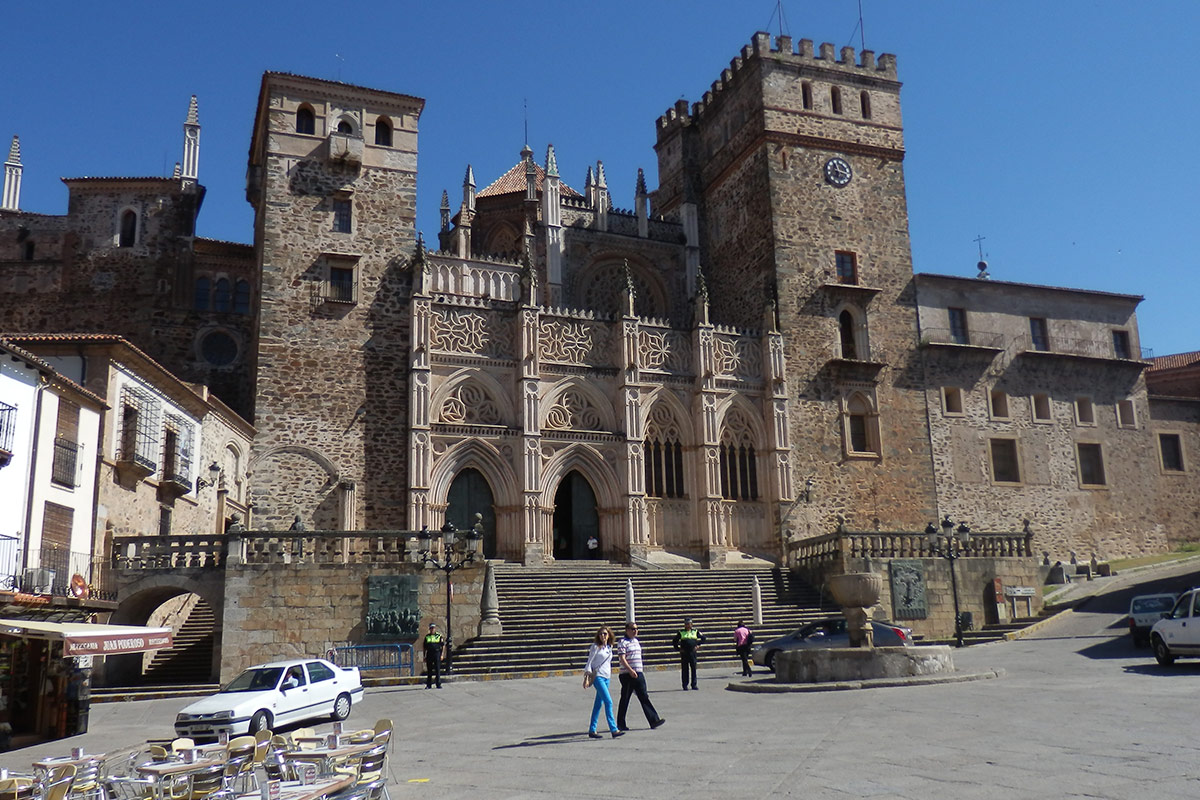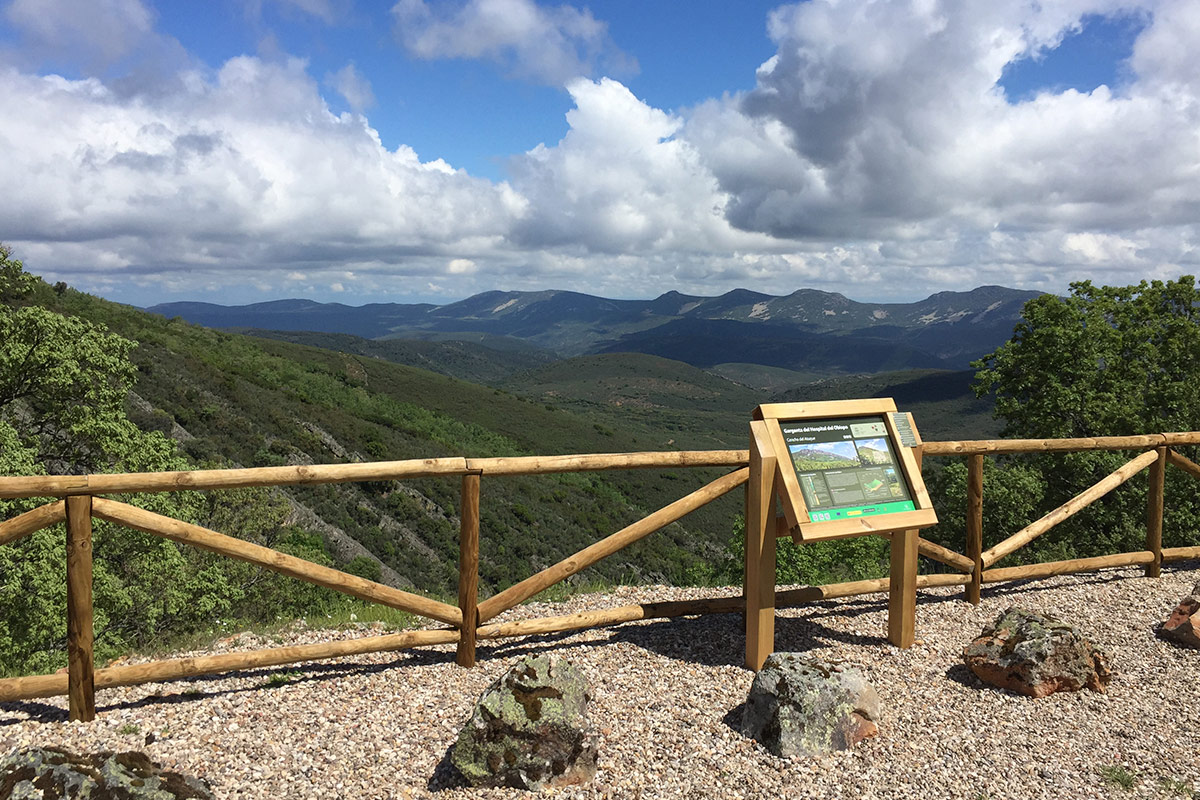



The Guadalupe Highroad is one of the traditional pilgrim routes to the Monasterio de Guadalupe; it connects this town to the capital cities of Madrid and Toledo. The section we are concerned with is that passing through the Geopark between the towns of Puente del Arzobispo and Guadalupe, which as it has a total length of 62.9 km is best divided into two or three stages.

It is a very demanding itinerary because of its length, the differences in height (with the altitude varying between the 325 m at the start and the 1,093 m of the Puerto del Hospital) and the lack of population centres, especially once past the Sierra de Altamira. The route begins in Puente del Arzobispo on the Cáceres bank (left-hand bank) of the River Tajo (”You are here”) and proceeds along the Royal Eastern León Drovers’ Road in a landscape alternating between cereal crops and olive groves and extensive dehesas of holm oaks (Quercus ilex) towards Villar del Pedroso to then continue to Carrascalejo. From this point it penetrates the Sierra de Altamira by ascending to the Collado de Arrebatacapas and comes to the village of Navatrasierra, to continue alongside the River Gualija and the Tumbafrailes Stream as far as the picnic area of Los Horcones. Through a mountain landscape of vast Pyrenean oak groves (Quercus pyrenaica) the route comes to the Hospital del Obispo, the old pilgrims’ hostel, and runs through the Monte del Cubero to the two bridges, first that of Pinarejo and then that of Los Álamos, over the River Ibor. The magnificent woodland of alders (Alnus glutinosa) on its banks precedes that of Pyrenean oaks and chestnut trees (Castanea sativa) which is followed through the Carrera del Caballo as far as El Humilladero to finally descend to Guadalupe along the Water Trail.

On the way, especially in the mountain areas, red deer (Cervus elaphus) and roe deer (Capreolus capreolus) abound and you can also observe peregrine falcons (Falco peregrinus), Egyptian vultures (Neophron percnopterus), and forest birds such as the jay (Garrulus glandarius), the nightingale (Luscinia megarhynchos), the nuthatch (Sitta europaea), etc.
On the way you can also see summer birds of prey such as the honey buzzard (Pernis apivorus), and numerous woodland birds such as the long-tailed tit (Aegithalos caudatus), and mammals such as the roe deer (Capreolus capreolus).
